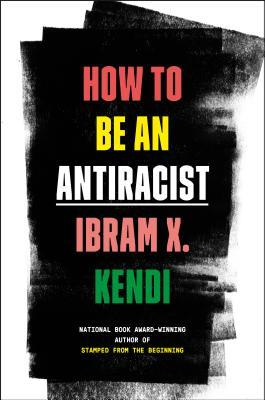How to Be an Antiracist

How to Be an Antiracist, by Ibram X. Kendi, is an essential book for people who want to better understand how racism is embedded in our society and how we can work more proactively to be antiracists. Part memoir, part guide, Ibram X. Kendi describes his life as a black man growing up in America and how he evolved into an antiracist. His account is unflinching as he unpacks many racist ideas he had internalized and describes how he rejected them.

The topic of antiracism may be new to many. Racism has often been viewed as a dichotomy; the common view is that someone is either racist or not, based on their actions. Kendi effectively reframes this definition. Racism can be about expressing racist ideas, but the definition is broader. Kendi describes a racist as "one who is supporting a racist policy through their actions or inactions." Racism is structural in nature, so it is necessary to consider policies that favour one race over another. Being an antiracist means supporting policies that are antiracist and equitable. For teachers, this means stopping to consider which policies in our classrooms and schools are not equitable. Which rules or practices favour white students over black, Indigenous and people of colour (BIPOC)? Identifying these policies and working to dismantle them is the first step to being an antiracist in the school system.
Kendi writes about the dueling consciousness that is at play within racist thought as assimilationist and segregationist ideas struggle with each other. Segregationist ideas "claim people of color are incapable of development, incapable of reaching the superior standard, incapable of becoming White and therefore fully human." Assimilationist ideas reject this claim, but are still based in the racist assumption that certain groups are behaviourally or culturally inferior. The assimilationist supports the idea of enrichment programs that help develop those groups culturally or behaviourally. By contrast, antiracists recognize that all racial groups are equal. Instead of focusing on developing a racial group, antiracists support policy that aims to reduce racial inequity.
For Canadian teachers, it is important to unpack where segregationist, assimilationist, and antiracist ideas come into play in our school system. For instance, we should examine our schools' disciplinary policies to identify if they work to segregate or unfairly punish BIPOC. We need to ask questions, like which groups are more likely to be referred to the office? Are white students and BIPOC suspended at similar rates for the same actions? Being an antiracist means identifying policies that are not equitable, challenging them and replacing them with equitable practices.
Similarly, we need to question how programs or practices are assimilationist. Kendi indicates that "since assimilationists posit cultural and behavioral hierarchy, assimilationist policies and programs are geared toward developing, civilizing, and integrating a racial group." Historically, Canada has had many policies aimed at assimilating Indigenous children, such as residential schools or the Sixties Scoop. Currently, the Millennium Scoop continues this practice. If we look with a critical eye, we can also uncover current practices and attitudes within the school system that are motivated by assimilationist ideas. Is our curriculum culturally relevant? Do students read books written by diverse voices? Are Indigenous languages and perspectives valued and taught? Are non-Christian holidays recognized and embedded into the school year structure? Or are White/Eurocentric traditions, languages, and culture dominant in schools and classrooms, in both open and subtle ways? It is essential we question which groups we are centering and make changes to move towards a classroom that is antiracist.
Throughout How to Be an Antiracist, Kendi identifies and unpacks different racist assumptions people make, drawing examples from American contexts and his own life. Importantly, he discusses intersectionality, where discrimination based on different aspects of one's identity overlap. Kendi discusses class racists, gender racists, and queer racists. He makes the point that a person cannot be antiracist and homophobic, or antiracist and sexist. To be antiracist is to work towards equity for everyone.
Near the end of How to Be an Antiracist, Kendi states that "the problem of race has always been at its core the problem of power, not the problem of immorality or ignorance." Correcting ignorance is comparably easier than changing power dynamics, which explains why racism is such a challenging problem. Being antiracist means questioning current power structures and working to change them. This is a formidable, yet essential task. If you would like to pursue this work in your own context, I highly recommend you pick up a copy of Kendi's book and take a deeper dive into his ideas.
Looking for more books about racism and the classroom? Check out my review of White Fragility: Why It's So Hard for White People to Talk about Racism
